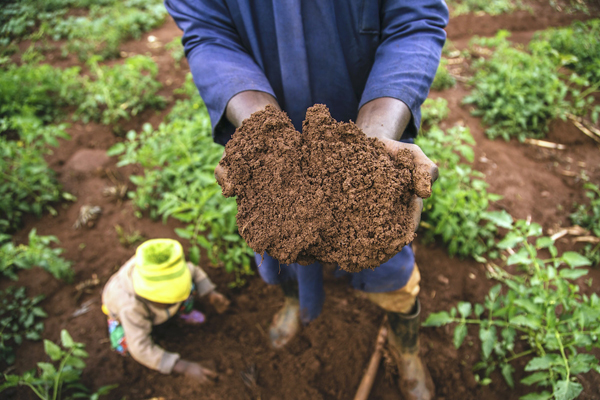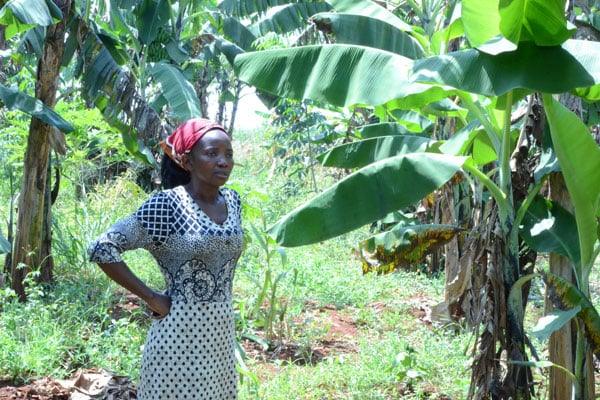How to tackle soil-borne diseases

What you need to know:
- Adequate crop nutrition makes plants more tolerant of, or resistant to, diseases. Also, the nutrient status of the soil and the use of particular fertilisers and amendments can have a significant impact on the pathogen’s environment.
You have done everything possible, including using enough fertiliser, top dressing, foliar feed, herbicides, fungicides and all, and even ensured your plants are well watered, but they do not seem to be growing right.
Even before they have lasted a month or two in the ground they start turning yellow, have rotting roots and stunted growth.
Despite the effort and money you have spent on your crop, you just watch it die because you do not know what to do.
However, there yet might be something you may not have considered — that the problem might be in the soil. It could be infested with diseases caused by fungal pathogens and that is what you need to treat.
Soil organisms
Soil-borne diseases occur due to a reduction in the biodiversity of soil organisms. They are harder to detect and test for than leaf-causing infection.
They often have similar symptoms to drought and nutrient deficiencies, which may be operating at the same time and can greatly reduce yield and quality. They cause diseases of the roots or stems and disrupt uptake of water and nutrients from the soil. This may lead to reduced yield, wilting, yellowing, leaf fall, stunting and plant death. Using field pesticides or fungicides may not be effective.
Fungal pathogens live in the soil and in residues on the surface and can build up slowly, with some surviving for more than 20 years, even without susceptible crops.
Causes
The majority of these pathogens affect many crops and may cause different types of diseases on different crops. For example, Fusarium oxysporum affects a wide variety of crops of any age. Tomatoes, tobacco, legumes, cucurbits, sweet potatoes and bananas are some of the most susceptible plants. A particular species may cause severe root rot on one crop but only cause superficial and symptomless infection on another.
However, some pathogens have a very narrow host range. For example, Fusarium oxysporum f.sp. lycopersici only affects tomatoes. The question would then be how one can destroy and protect their soils from these pathogens?
As a smart farmer who wants to get the most from what you have, choose an effective and economical disease management option. It should be simple, safe, and adequate to reduce the diseases considerably. Soil-borne diseases occur due to a reduction in the biodiversity of soil organisms.
Factors
When choosing your method of control, assessment of disease incidence, disease severity, and potential crop loss are key factors.
Timing is also critical to hit the pathogen before it causes irreversible damage to crops. Few management options possess all the above qualities and so a mix of them is advisable.
They include biological control, cultural methods and chemical intervention. Let the good ones to eat the bad (Biological control). This will involve adding beneficial soil organisms and the food they need to the soil to increase their numbers and type.
These organisms would help stabilise the soil’s biological system and suppress diseases through competition, antagonism, and direct feeding on pathogenic fungi, bacteria and nematodes. There are a number of commercial products containing beneficial, disease-suppressive organisms.
These products are applied in various ways, including seed treatments, soil and compost inoculants and soil drenches.
Among the beneficial organisms available are trichoderma, mycorrhiza, flavobacterium, streptomycetes, gliocladium spp., bacillus spp., pseudomonas spp.
A practical example is the use of Trianum, Koppert’s patented hybrid strain of the beneficial fungus trichoderma harzianum. The fungus works in different ways to choke growth of harmful fungi like fusarium, pythium, rhizoctonia and sclerotinia. The first is competition.
Trianum grows faster than the pathogenic fungi, competing for space and nutrients, leading to starvation, which causes death for microorganisms. It also behaves like a mycoparasite growing around pathogens and producing enzymes that break down their cell walls.
Thirdly, the fungus helps to stimulate vigorous growth of the root system and improves the uptake of water and nutrients.
This results in a stronger, more uniform crop, which gives better yields even under difficult conditions. Growers using the product have reported amazing benefits.
They include vigorous and healthy crops resistant to soil-borne and secondary diseases, an increase in yields of a higher quality and a healthy return on investment. Trianum is also versatile and grows fast and effectively on the roots of all plants. This means it can be used in vegetables, flowers, fruit crops, field crops, lawns and forestry among others.
Cultural methods
This involves making the environment the pathogens live less comfortable through crop rotation, plant nutrition and compost amendments.
Crop rotation
Many diseases build up in the soil when the same crop is grown year after year.
Break the cycle through rotation to a non-susceptible crop, which will also reduce pathogen levels. Carefully plan the rotation for success. Since diseases attack plants related to each other, group the crops within families or species.
The susceptible crop, related plants, and alternate host plants for the disease must be kept out of the field during the rotation. Since pathogens persist in the soil for different lengths of time, the length of the rotation should be varied with the disease.
However, crop rotation will not help control diseases that are wind-blown or insect-vectored from outside the area or pathogens that can survive long periods in the soil without a host.
The role of plant nutrition in disease control Soil pH, calcium level, nitrogen form and nutrients can help in disease management.
Adequate crop nutrition makes plants more tolerant of, or resistant to, diseases. Also, the nutrient status of the soil and the use of particular fertilisers and amendments can have a significant impact on the pathogen’s environment.
For example, nitrate forms of nitrogen fertiliser may suppress fusarium wilt of tomato, while the ammonia form increases disease severity.
Compost
Compost has been used effectively in the nursery industry, in high-value crops, and in potting soil mixtures for control of root rot diseases. A diversity of bacteria, fungi, protozoa and beneficial nematodes exists in good compost.
Adding mature compost to soil induces disease resistance in many plants. The larger biomass of active microrganisms the greater the soil’s capacity to use carbon, nutrients, and energy, which lowers their availability to pathogens.
Other cultural control methods include use of disease-free transplants or seeds, planting of resistant varieties soil solarisation treatments, crop sanitation involving destruction and or disposal of plant residues to reduce the disease agent’s ability to reproduce or over season in crop debris. Proper weed control is another.
Weeds
Weeds may serve as hosts for many diseases. Pre-plant fumigants, for example, metham sodium, are often successful in reducing soil borne innoculum, though their use may be expensive and regulated.
Fungicide-treated seed is an important tool against certain seed and seedling diseases. In some situations, a fungicide applied to the soil or to plants can be an effective disease management tool. For most soil-borne pathogens, however, field-applied fungicides are usually not very effective.
Plan carefully
Break the cycle through rotation to a non-susceptible crop, which will also reduce pathogen levels. Carefully plan the rotation for success. Since diseases attack plants related to each other, group the crops within families or species.




